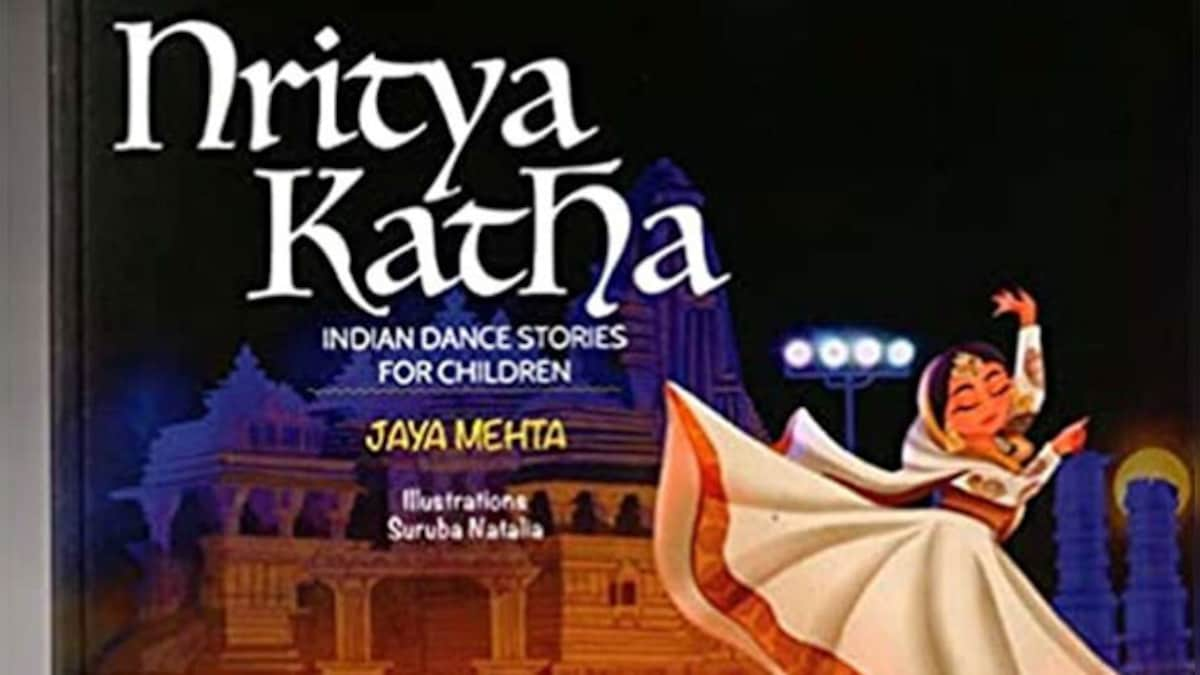Nritya Katha: Indian Dance Stories for Children, is a collection of stories about Indian dance forms. The book is written by Odissi dancer, educator and author, Jaya Mehta.
India is the dance capital of the world, with eight classical dances and hundreds of regional dances! Nritya Katha unravels eight classical dance forms, and two regional dance forms in the form of stories for children. Through a child’s intimate, magical, personal journey, the stories unravel the fascinating contexts of each Indian dance form: their art, architecture, costumes and crafts.
The international collaboration with illustrator, Natalia Suruba has lead to the book’s exquisite illustrations of the dance costumes, dance festivals, temple architecture, rural and urban landscapes. The book is published by the National Book Trust of India and its international quality of book design is by book designer Swati Chakrabarti.
Inspiration behind the book
In a recent statement, when asked about the inspiration behind the book, she revealed, “It is my journey as a young Odissi dancer, who became a mother of two that shaped this book. When my children Revant and Ananya were little children, I loved reading storybooks to them every night.”
She added, “I found fascinating picture books about Ballet, Flamenco and even Balinese dance. I wondered why India has eight classical dances, but we have no illustrated storybooks about Indian dances for our children. To address this lacunae in Indian children’s books and cultivate a sense of cultural pride in our children, I wrote Nritya Katha. My need to reach children, was also shaped by the dance workshops I created like ‘Mum, ME and Odissi’ and ‘Discover India’. These workshops were all about innovative ways to connect our beautiful aesthetics, arts, stories and festivals with dance. I wanted children to think about why an Odissi dancer wears only silver filigiree jewellery? Why do we celebrate Diwali on different dates every year?”
She further revealed, “In the book Nritya Katha, I have continued with my idea of dance as a kaleidoscope, that connects us to our fascinating rituals and traditions, and creates powerful well being for the mind. The child is at the centre in every story, as I must share with the young readers what I have imbibed from my study of Indian art, history and classical dance. I hope that each child that reads the stories, find their own associations about themselves and the Indian-ness within. All of this was accomplished through beautiful illustrations and visual design that leapt off the page, to engage with the young ones.”
Thought process and methodology how important is the dance for the Children.
I believe children must receive dance with its context and not just as a series of steps. Like we read literature, with the context of its times, dance is a beautiful example of diversity. The dances of India reflect the astonishing diversity of our states: the white and gold traditional saree of Kerala, takes shape of the costume in Mohiniattam; The 108 shiva sculptures of the Chidambaram temple, form the inspiration of movement in Bharatnatyam while the headgear of Odissi is made of shola pitha, traditionally used in eastern India. How this diverse art, craft and culture reflects in our dances would make a fascinating way to study India. In this manner educators and parents can connect history, geography, art, craft, movement and culture through a study of Indian classical and regional dance forms.
That children be able to dance barefoot and make a connection with mother earth is also a wonderful way of grounding, and their use of mudras is an expressive awareness of their hands. This ‘being in their body’ awareness, can further take flight through the storytelling aspect of Indian dances, with its full gamut of imagination and emotions. In Nritya Katha, Aadi, a shy boy finds moving like animals a fascinating aspect of learning Chau with his guru. On the other hand, a girl Saanvi who loves storytelling, loves the stories she gets to dance and depict in Kuchipudi.
So, for every kind of child, whether they are shifting homes and making tough transitions, or those whose imagination loves to take flight, dance offers a refuge and a new community to belong to. The Dance diversity of India, is also a beautiful way to create self-pride in our young children. Parents also seek ways to give culture to children, and the easiest way is to read to them stories like Nritya Katha that revel in India, being Indian and feel like a journey through many states of India!
Read all the
Latest News
,
Trending News
,
Cricket News
,
Bollywood News
, India News
and
Entertainment News
here. Follow us on
Facebook
,
Twitter
and
Instagram
.

